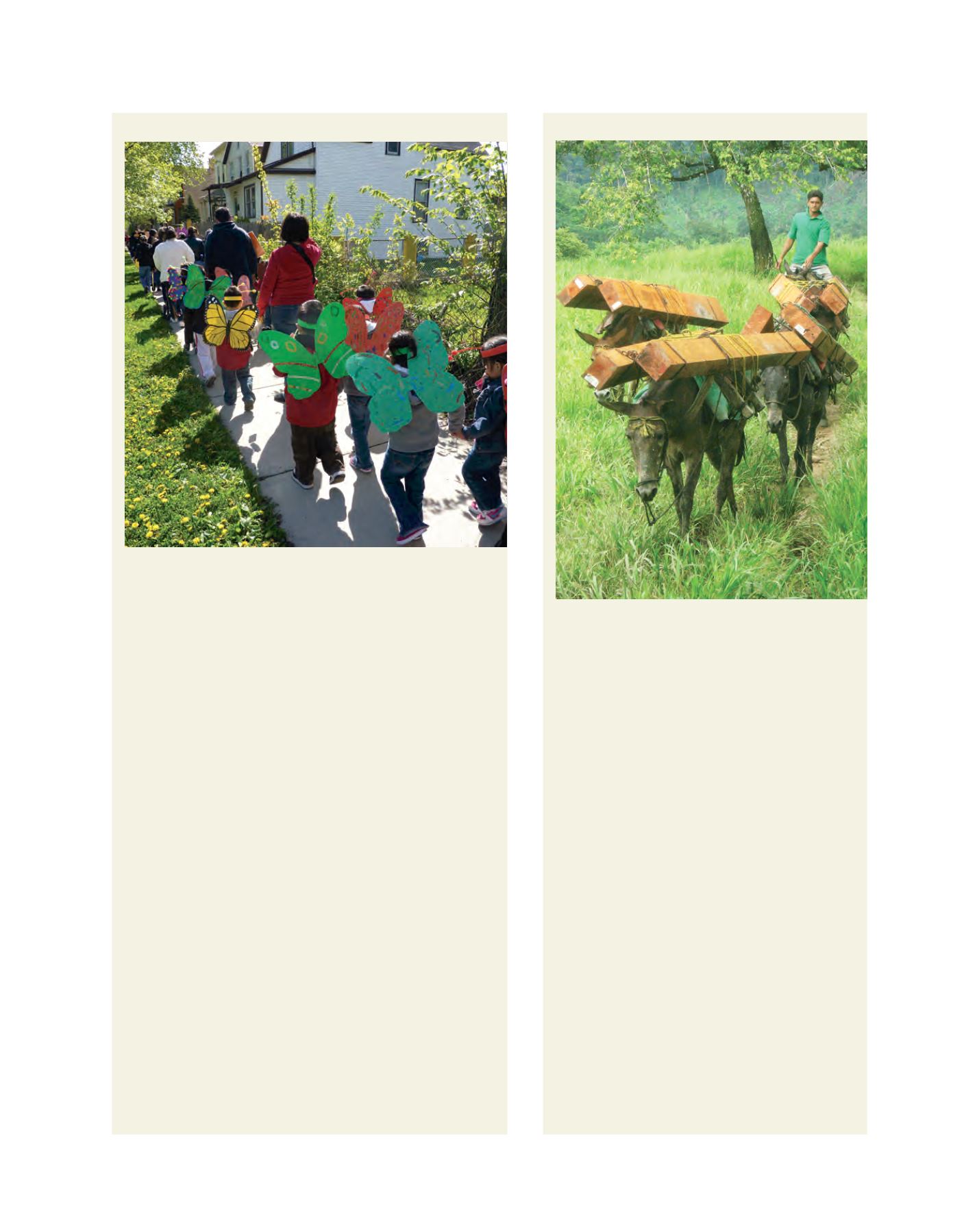

[
] 213
Honduras: Community forest management
North America: Saving one of nature’s winged wonders
Through a commitment to the sustainable development of its
natural resources, the community of Copén, Honduras, has
become a pioneer in forest management. Of the 35 families
in the community, 26 are members of the Cooperativa Brisas
de Copén forest enterprise, working together to sustainably
harvest bigleaf mahogany and create value-added products
with minimal impact on the forest ecosystem.
Since 1999, Copén has been working with the non-profit
GreenWood and its Honduran counterpart, Fundación
MaderaVerde, to improve production techniques, test new
technologies, develop products and find market opportunities.
This has led to multiple contracts and a lasting relationship
with the Taylor Guitar Company – Copén has become one
of Taylor’s primary sources for mahogany guitar necks.
Net profits from these contracts are invested in a variety
of collectively managed community funds, supporting
an insurance policy for the workers, a small loan fund
and a social fund that has helped to finance community
improvements such as solar energy cells for homes, school
repairs and road work.
With USAID funding and USDA Forest Service technical
assistance, along with other donor funding, Copén,
GreenWood/MaderaVerde and Helveta have been piloting a
project using personal data recorders and a bar code system
to provide stump-to-market tracking of every piece of wood
processed for Taylor guitars. With the pending launch of the
complete system, consumers will be able to track their guitars
back to the forest that provided the wood and the community
that processed it.
Copén’s success in sustainably managing its timber
resources has helped stem land use change in the sensitive
buffer zone of the Río Plátano Biosphere Reserve. The Food
and Agriculture Organization of the United Nations named
Copén as one of 18 Model Forests in Latin America and it has
become a benchmark for sustainable community forestry and
enterprise throughout the region.
Every year, millions of black-and-orange Monarch butterflies migrate
thousands of miles from Canada and the United States to spend the winter
in Michoacán, Mexico and southern California, returning north in the spring.
Monarchs have an important ecosystem function as pollinators, as well as
indicators of healthy lands.
Use of pesticides, habitat conversion and changes in land management
practices mean that Monarch habitat across North America is rapidly
disappearing, posing serious threats to the population’s long-term viability. In
2010, the World Wildlife Fund included the species on its list of those thought
to be highly threatened and in need of closer monitoring and protection.
As the Monarch migrates through urban areas in the United States,
outreach to inner city youth is an essential component of USDA Forest
Service educational and conservation efforts. The agency is teaming up with
museums, community-based organizations and schools in several cities to
use the Monarch as its primary teaching tool. These programmes provide
youth with conservation and leadership training, employment opportunities
and increased environmental awareness. Students and families are actively
encouraged to create habitat on public lands, in schoolyards and even
around their own homes.
The USDA Forest Service has a partnership with El Valor, a local
organization in Chicago, home to the second largest Mexican-American
population in the United States, many of whom immigrated from
Michoacán, the Monarch’s overwintering grounds in Mexico. The Monarch
is a strong cultural symbol for them, and the partnership has involved the
engagement of over 2,000 children and parents in conservation efforts.
The partnership focuses on the entire family, especially on children with
disabilities.
Successful conservation of Monarch habitat requires coordination of
various partners and efforts in the public and private sectors, both in the
United States and abroad. In Mexico, the USDA Forest Service is working with
communities in Michoacán who depend on the resources and ecotourism
generated by their local forests and by the Monarch for their livelihoods. The
agency provides technical assistance and capacity-building in forest inventory,
ecological mapping, ecotourism, recreation site management, conservation and
outreach. Since 1993, the USDA Forest Service’s partnership with the Mexican
Government and with non-governmental partners in the communities adjacent
to the Butterfly Biosphere Reserve has increased management capacity for
conserving Monarch habitat in Mexico.
Traditional method for transporting sawn wood
Children participating in an El Valor environmental
education programme
Image: Fundación MaderaVerde/GreenWood Inc., Sico-Paulaya, Honduras 2010
Image: Michael Rizo, USDA Forest Service
















